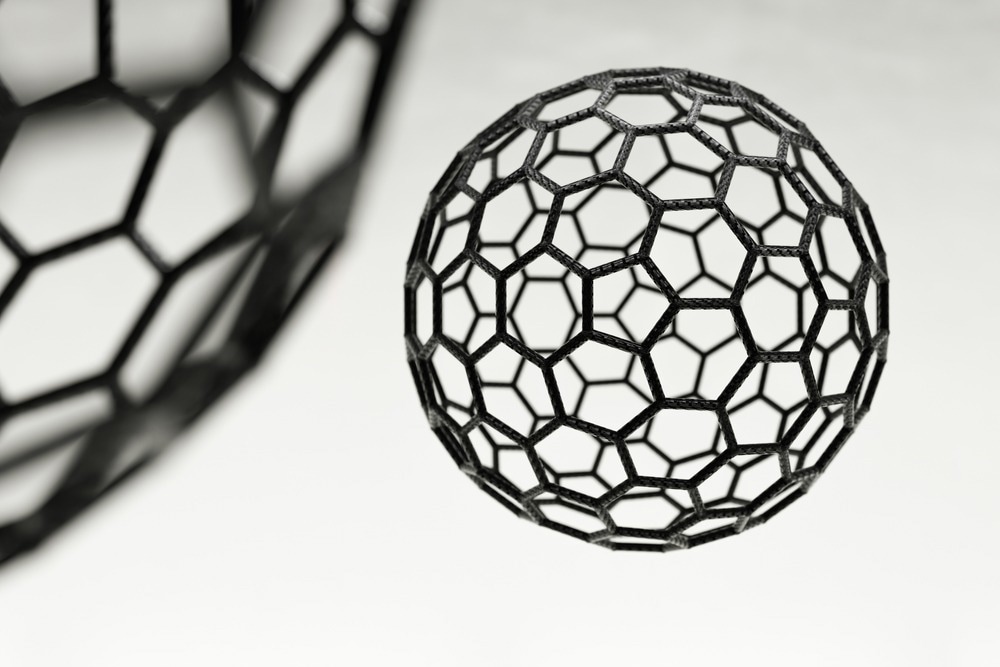The article discusses the various types of nanomaterials incorporated in RAC blends and the effect on essential properties of recycled concrete aggregate.

Image Credit: Sundry Photography/Shutterstock.com
The new era of sustainable eco-friendly manufacturing has shifted all industries towards carbon neutrality, especially the concrete industry. Recycled aggregate concrete (RAC) is an essential product in this regard. However, several shortcomings in its performance have encouraged researchers to investigate the effects of various additives.
An Overview of Recycled Aggregate Concrete (RAC)
As per the latest research published in the Journal of Cleaner Production, the construction industry accounts for the use of around 40% to 60% of natural resources, and construction and demolition (C&D) waste is about 35% to 40% of total worldwide waste. Excessive resource consumption and a persistent rise in the volume of C&D waste are serious threats to the sustainable construction industry.
Recycled aggregate concrete (RAC) is typically concrete made from C&D waste that partially or entirely substitutes traditional natural aggregates (NAs). As per the British standard BS 8500-2 (BSI, 2006), RCA is defined as recycled aggregates with maximal masonry/fines composition of 5%, 0.5% maximum elemental composition of lightweight material/asphalt, and a maximum limit of 1% other foreign materials.
Need for Modification of RAC
A considerable number of previous investigations have shown that RCA has a detrimental influence on concrete properties and performance in contrast to NA concrete. The concrete manufactured with natural aggregates is much superior in terms of strength and tensile properties. The poor qualities of waste aggregates with bonded mortar on the surface are the core reason for the decline in the performance of recycled aggregate concrete. This necessitates the modification of the RAC substance.
Which is the Best Method for RAC Modification?
Researchers devised several methods to effectively improve the performance characteristics of RAC. The most typical approaches for enhancing the quality include the elimination of connected mortar, the reinforcement of weak mortar, and the alteration of the blending process. However, these methods did not produce the intended results.
The incorporation of nanomaterials, however, led to convincing enhancement in concrete properties. Nanoparticles enhanced the bulk properties of concrete and provided a favorable filler effect by enhancing the intersectional zone of the cement, leading to an increase in the density of concrete.
A study published in the journal Materials Today: Proceedings also proved that the incorporation of nanomaterials significantly improved the properties of concrete materials. This research examined the performance of nano-modified concrete pavements under varying external loads. The results demonstrated that adding nanoparticles to concrete considerably enhanced static qualities such as compressive and tensile strengths, as well as dynamic characteristics such as fatigue, flexural strengths, and impact attributes.
Several types of nanomaterials are available with varying properties. The latest research published in the journal Cogent Engineering provides a thorough overview of the role of nanomaterials in boosting the performance attributes of recycled aggregate concrete.
Effect of the Addition of Nanomaterials in Fresh RAC
The performance of freshly developed RAC is useful as it provides insight into its operational properties when it is hardened. The incorporation of nanotechnology in fresh RAC has been researched to test the flowability of concrete mixes.
The nano-silica additive leads to a decrease in the workability of RAC, mainly due to a high specific surface area of silica, resulting in rapid agglomeration. Additionally, the incorporation of multi-walled carbon nanotubes (MWCNTS) into RAC mixtures results in a much-reduced slump rate of 57% when compared to standard RAC.
Effects of Nanoparticle Addition on Compressive and Tensile Strength
The compressive strength test is the most essential parameter for determining the qualities of RAC since it is indicative of the quality and integrity. Nano-silica, Nano Clay, and Nano Calcium Carbonate are extensively researched owing to their superior properties as fillers. Introducing 2% nano-silica increases compressive properties by 35% - 75%, dependent on RCA replacement levels.
Nano-titanium (NT) is a well-known form of nanoparticle that is frequently employed in structural concrete as a photocatalyst. The principal application of nano-TiO2 is to increase the preliminary strength of concrete and decrease the overall porosity via a denser RAC blend.
Carbon nanotubes (CNTS) are the most effective nanoparticles operating as a reinforcing ingredient in RAC, with their bridging actions efficiently improving the mixture's compressive attributes. By coating the recycling aggregates, preserving their permeability, and accelerating the hydration of cement, CNTs substantially improve the microstructure of RAC.

Image Credit: Forance/Shutterstock.com
A significant concern is determining the tensile splitting capability of RAC constructions. This is because concrete constructions are more prone to tensile fracturing owing to various stresses and imposed loads.
The tensile behavior of nano-modified RAC mixed with nano-SiO2 is strikingly comparable to that described for compressive strength, with an augmentation proportion ranging from 6% to 27% higher than that of traditional RAC blends. Similarly, the addition of other nanomaterials such as multi-walled CNTs also results in a considerable improvement in tensile strength.
How Flexural Strength is Affected by Nanomaterials?
The flexural strength of RAC is regarded as a crucial measure of concrete building stability. The incorporation of about 2% silica nanoparticles is optimal to increase the flexural strength of RAC at all ages. Among other nanoparticles, nano-clay in a proportion of about 15% results in an increase in flexural strength by about 12.5%.
The incorporation of Nano-Ti is a bit tricky, with varying trends. The influence of TiO2 nano-photocatalyst on the flexural strength of 100% RCA RAC mortar was investigated by researchers in a study published in the Journal of Cleaner Production.
The samples were evaluated after 90 days, and flexural strength testing was performed following ASTM guidelines. Their findings demonstrated that adding 1% TiO2 nanoparticles enhanced flexural strength by 1% when compared to standard RAC. When the temperature was elevated to 500°C, the usage of nano-TiO2 had a detrimental influence on flexural strength resistance.
Furthermore, nanomaterials can increase the impact performance of RAC frameworks by assisting in the production of a highly dense blend by filling the holes caused by the presence of RCA.
Challenges and Future Perspectives
A significant concern is that the use of nano-modified RAC under severe conditions is poorly characterized, making it challenging to determine the most suitable nanomaterial to be utilized. Furthermore, due to the enormous quantity of nanoparticles required to create the framework, assessing the entire cost of nano-enhanced RAC is a crucial issue that cannot be disregarded.
To make RAC blends containing various nanomaterials work equally at the same ideal binder composition, a new nanomaterial-modified binder with improved characteristics is required. Additionally, more research is required to explore the link between nanomaterial morphology and RAC performance under uncontrollable factors and environmental impacts. These would be fruitful in the standardization of nanoparticle addition to RAC mixtures.
In short, the addition of nanomaterials in recycled aggregate concrete provides a boost to the performance of RAC. However, since results vary with environmental conditions, further research is needed to thoroughly understand the variations in properties.
More from AZoBuild: A Thorough Review Of Waste Materials In Concrete
References and Further Reading
Tang, Y. et. al. (2022). Natural gravel-recycled aggregate concrete applied in rural highway pavement: Material properties and life cycle assessment. Journal of Cleaner Production, 334, 130219. Available at: https://doi.org/10.1016/j.jclepro.2021.130219
Allujami M. et. al. (2022). Nanomaterials in recycled aggregates concrete applications: mechanical properties and durability. A review. Cogent Engineering. 9(1). 2122885. Available at: https://doi,org10.1080/23311916.2022.2122885
Allujami, H. M., Jassam, T. M., & Al-Mansob, R. A. (2021). Nanomaterials characteristics and current utilization status in rigid pavements: Mechanical features and Sustainability. A review. Materials Today: Proceedings. Available at: https://doi.org/10.1016/j.matpr.2021.04.077
Moro, C., Francioso, V., & Velay-Lizancos, M. (2020). Nano-TiO2 effects on high-temperature resistance of recycled mortars. Journal of Cleaner Production. 263. 121581. Available at: https://doi.org/10.1016/j.jclepro.2020.121581
Disclaimer: The views expressed here are those of the author expressed in their private capacity and do not necessarily represent the views of AZoM.com Limited T/A AZoNetwork the owner and operator of this website. This disclaimer forms part of the Terms and conditions of use of this website.